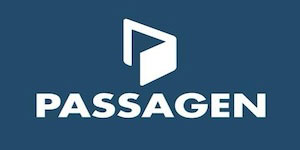‘Mythic Battles: Ragnarok’ Board Game Review

When we reviewed Mythic Battles: Pantheon just a month or two ago, I had no idea that soon-to-follow would be a newer, more refined take on the divine conflict genre that I had immediately fallen in love with. Mythic Battles: Pantheon is brilliant, and for me, the Greek mythology setting is perhaps the absolute pinnacle – but Mythic Battles: Ragnarok is more refined, more balanced and arguably – even though I enjoy the Norse mythos less – even better. The fundamentals of gameplay are the same, but you can see where four or five years of feedback has been invested in Monolith’s immense follow-up.
Mythic Battles: Ragnarok shares the same setting as Mythic Battles: Pantheon, with the idea that some cataclysmic event has rendered the Gods down to Earth, making them mortal and forcing them to fight for divine stones in order to reclaim their power. As in Pantheon, players choose a points value, then draft a single divinity (either a God or a Titan) and then any number of monsters, heroes and troops (as allowed by their points) until they have a team. Gods. monsters and heroes come with a single miniature and a large board that tracks their health, movement and attack value, whilst troops feature a simple stat card with between two and five models to represent the troop itself.
There are many scenarios to play which can accommodate anything from one to four players, although you’ll need to download the Nemesis rulebook PDF in order to play solo. Even though various scenarios support three or even four players, Mythic Battles: Ragnarok is undoubtedly best as a two-player skirmish game, and with the unlimited possibilities offered by the draft, you don’t really need to take the printed scenarios into account at all – unless you want to retell a specific story, such as the infamous Attack on Hedeby, or the story of Beowulf, Grendel and Grendel’s mother.
What was great about Mythic Battles: Pantheon is also true of Mythic Battles: Ragnarok and that is the characters on offer. Whilst I might prefer Greek mythology personally, I suspect I am in the minority – and with Gods like Loki, Thor, Hel and Freya, plus heroes such as Harald Hardrada and Sigmund, there are lots of recognisable choices. Mythic Battles: Ragnarok does reserve some big names for expansions such as Odin (Asgard expansion) and Ragnar Lothbrok (Ragnar Saga expansion) but because all copies of Mythic Battles: Ragnarok are bundled across two huge boxes (one of which stores miniatures, the other all the punched cards and other components) there’s still plenty to work through in the core experience.
Because Mythic Battles: Ragnarok is so focused on miniatures, I have to mention the quality of those on offer here. Mythic Battles: Ragnarok has perhaps the best miniatures I’ve seen in recent years, with some Gods and monsters being five or six inches tall and packed with detail, and even the smaller troop units having a ton of detail. Whilst Mythic Battles: Pantheon was pretty nice, there’s a clear improvement in terms of both the quality of the materials and the detail on the sculpts in Mythic Battles: Ragnarok. Other components such as cards and even the instruction manual has improved – and this is where I think a lot of the lessons learned have been applied. There are errors and spelling mistakes, but much fewer than there were in Mythic Battles: Pantheon.
Whilst there are fewer models overall than there are in Pantheon, there is also less repetition in terms of ability sets, and the units felt more streamlined and balanced to me in general throughout across a number of games with various combinations. This makes units in Mythic Battles: Ragnarok feel a bit more individual in nature, with each one not only having their own unique mythos but also their own way of playing on the battlefield. Unit abilities in Mythic Battles: Ragnarok fit each character thematically, with some characters very clearly designed to hunt down Gods and others designed to collect gems. Generally, the cost of a unit reflects its strength – and whilst we did find a couple of “broken” combos, there are fewer here than there are in Mythic Battles: Pantheon for sure.
I love it when mechanical elements in games tell stories, and so many characters in Mythic Battles: Ragnarok have that feeling about them. Take Veteran Lagertha, for example, who is one of two sculpts for Lagertha in the game. In this variant, she appears vengeful and carries the head of a fallen foe, with good attack, defence and movement stats, as well as the ability to go berserk, lead troops and slay heroes. Most thematically though are her activated abilities – Linebreaker and Final Embrace. With Linebreaker, she attacks a unit in her space and can then move to an adjacent space. With Final Embrace, she performs a six dice attack at range zero to one against whoever defeats her. Both of these abilities feel fitting for the Queen and shieldmaiden of legend who saved Ragnar so many times.
Heimdall is another example, and as the Guardian of the realm of the gods, his abilities are slightly defensive in nature. With very high attack and defence stats, Heimdall is simply very strong, but he also has the ability to block (which can lock units in his space), to collect divine stones from adjacent spaces and to slay monsters with a plus one bonus. His main activated abilities however, are to blow his Gjallarhorn – which is a range two attack that causes a non-divine unit to drop a divine stone if they have one, and his Vigilance, which allows his controller to either draw a card or discard one card and then draw two.
Abilities like Vigilance are so important in Mythic Battles: Ragnarok because the only way a player can activate their units is by playing a card that represents that unit – and these are limited to between three and five cards per unit. You’ll certainly find as you play more of Mythic Battles: Ragnarok that better characters have fewer cards in general, so whilst a particular effect might be huge and game-changing, having fewer cards to activate the character who performs that ability will make it harder to do so. There’s a lot to be said for weaker heroes, monsters or troops who have many activations.
One completely new addition in Mythic Battles: Ragnarok that was not present in Mythic Battles: Pantheon is that of Jarl’s – who are basically cards that cost one recruitment point and attach themselves to a troop unit (without a miniature) adding a small benefit, such as additional damage or protection. Generously, Mythic Battles: Ragnarok also contains a small deck of Polemarch cards, which are basically the same as Jarl’s but can be added to your existing copy of Mythic Battles: Pantheon. On that note, characters and boards are more or less fully interchangeable between the two games, so there’s nothing really to stop you from pitting a Greek God against a Norse one to see who reigns supreme.
Whilst it is essentially just more of the same, Mythic Battles: Ragnarok is certainly a refinement on the original Mythic Battles: Pantheon. It adds Gods, heroes and monsters that more people will be familiar with, and it streamlines the game through better rules, more balanced abilities and higher quality miniatures that give it greater appeal. It is slightly “less is more” in terms of the total amount of content on offer, but there’s still more here than any casual player will ever get through, and then there are plenty of expansions for those who want to add to their experience – including the whole of Mythic Battles: Pantheon.




















































